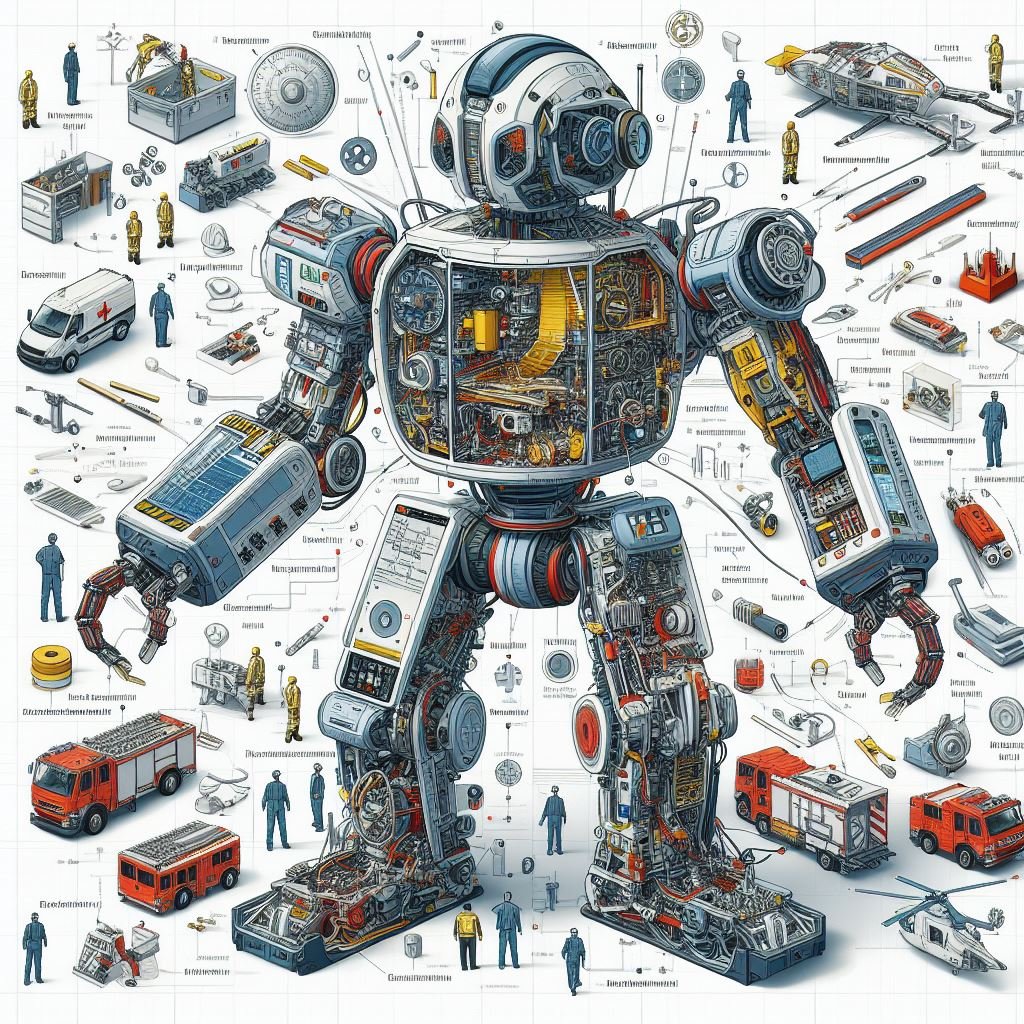In the face of natural disasters, industrial accidents, and other emergencies, the role of rescue robots has become increasingly vital. These sophisticated machines are designed to navigate hazardous environments, locate survivors, and assist first responders in their life-saving missions. In this article, we delve into the intricate process description of a rescue robot, shedding light on its design, functionality, and operational procedures.
Design and Construction: The development of a rescue robot begins with meticulous design and engineering. The robot's chassis is typically constructed from durable materials such as aluminum or carbon fiber to withstand harsh conditions and physical impacts. Modular designs are preferred, allowing for easy customization and integration of various sensors and tools.
The locomotion system of the robot is a critical aspect of its design, enabling it to traverse diverse terrains with agility and stability. Wheeled and tracked configurations are common choices, offering versatility and maneuverability in different environments. Some advanced rescue robots incorporate articulated legs or caterpillar tracks for enhanced mobility over rough terrain or debris.
Sensors and Perception: Central to the functionality of a rescue robot are its sensory systems, which enable it to perceive its surroundings and gather crucial information in real-time. These sensors include cameras, LiDAR (Light Detection and Ranging), thermal imaging cameras, gas detectors, and microphones, among others.
Cameras provide visual feedback to operators, allowing them to remotely navigate the robot and assess the situation. LiDAR scanners generate detailed 3D maps of the environment, facilitating obstacle detection and navigation. Thermal imaging cameras detect heat signatures, aiding in the detection of survivors in low-visibility conditions or obscured environments.
Control and Communication: Rescue robots are typically operated remotely by human operators, who command and control their movements and actions from a safe distance. Communication between the robot and its operators is established through wireless networks, such as Wi-Fi, radio frequency (RF), or cellular connectivity.
Operators use specialized control interfaces, including joysticks, gamepads, or touchscreen devices, to maneuver the robot and activate its functionalities. Real-time video feeds and telemetry data are transmitted from the robot to the operator's console, providing situational awareness and feedback during rescue operations.
Navigation and Mapping: Navigation is a critical aspect of rescue robot operations, enabling the robot to autonomously explore and navigate complex environments. GPS (Global Positioning System) receivers provide absolute positioning information, while inertial measurement units (IMUs) and wheel encoders enable dead reckoning navigation and localization.
Simultaneous Localization and Mapping (SLAM) algorithms are employed to generate maps of the robot's surroundings and localize itself within the environment. These maps are continuously updated as the robot explores its surroundings, allowing it to adapt to dynamic changes and obstacles in real-time.
Task Execution and Manipulation: Rescue robots are equipped with a variety of tools and manipulators to perform specific tasks during rescue operations. These tools may include robotic arms, grippers, cutting tools, drills, and winches, among others.
Robotic arms and grippers enable the robot to manipulate objects, clear debris, and provide assistance to survivors. Cutting tools such as saws and shears are used to penetrate obstacles and access confined spaces. Winches and pulleys enable the robot to lift heavy objects or navigate vertical surfaces such as stairs or rubble piles.
Operational Procedures: During a rescue mission, the deployment of a rescue robot follows a well-defined set of operational procedures. The robot is transported to the disaster site and deployed by trained personnel, who establish communication with the robot and monitor its progress throughout the mission.
Once deployed, the robot systematically explores the environment, searching for survivors and assessing the extent of damage. Operators remotely control the robot's movements and activate its tools as needed to clear obstacles and access hard-to-reach areas.
Conclusion: Rescue robots represent a remarkable fusion of engineering, robotics, and artificial intelligence, offering invaluable assistance in disaster response and emergency situations. From their robust design and sensory systems to their precise control and manipulation capabilities, these robots are instrumental in saving lives and mitigating the impact of disasters.
As technology continues to advance, the capabilities of rescue robots will only continue to grow, enabling them to operate in increasingly challenging environments and perform ever more complex tasks. By harnessing the power of innovation and collaboration, we can further enhance the effectiveness and efficiency of rescue robot systems, ensuring they remain at the forefront of emergency response efforts around the world.
#RescueRobot #DisasterResponse #EmergencyRobotics #SearchAndRescue #RoboticsTechnology #EngineeringInnovation #SensorySystems #RemoteOperation #NavigationTechnology #TaskExecution #DisasterRelief #RobotAssistance #LifeSavingTechnology #AIinRescue #RoboticManipulation #HumanitarianTech #DisasterMitigation #AdvancedRobotics #TechForGood #RescueMission #RobotDesign #EmergencyManagement #DisasterRecovery #InnovativeTechnology #SafetyFirst #amoltecnicalguru

